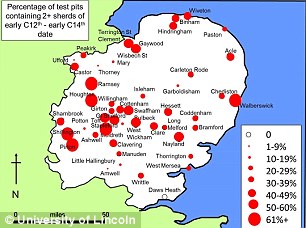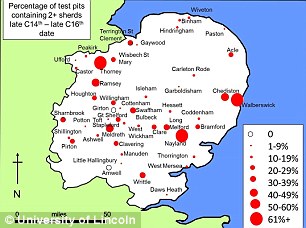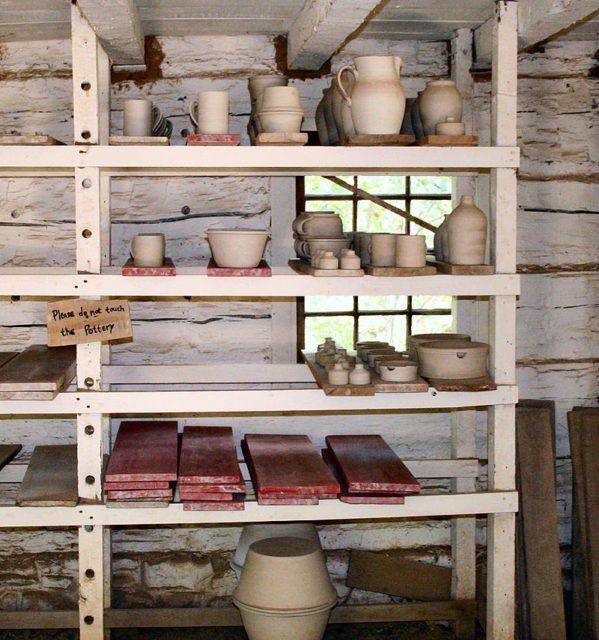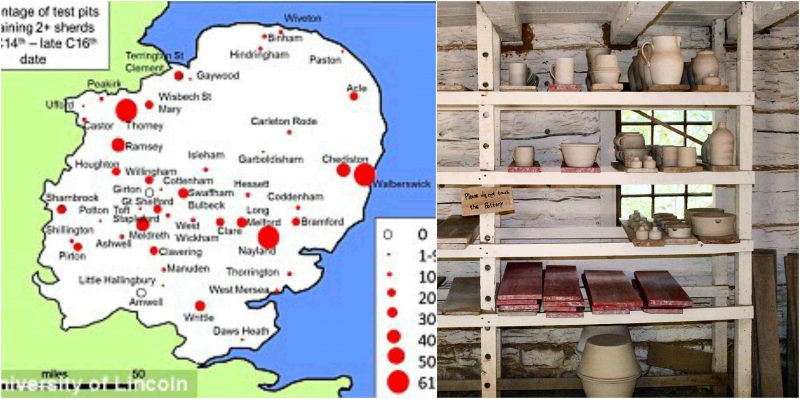The plague of the Black Death was one of the most destructive in history; the total body count is estimated to be up to 200 million people across Europe between 1346 and 1353. The hardest hit areas were those that were densely populated. What was not as well-known was how individual villages and towns were decimated by the epidemic.
Research by archaeologists, from the University of Lincoln, may shed some light on this issue. Essentially, they used broken pottery as a measure of the presence of human populations. In other words, by studying the pottery in fifty-five rural locations, they could figure out how the populations in those areas were affected.
The lead archaeologist of this study, Professor Carenza Lewis, explained the team’s reasoning. “This new research offers a novel solution to that evidential challenge, using finds of pottery — a highly durable indicator of human presence — as a proxy for population change in a manner that is both scalable and replicable.” He continued, “This new research suggests there is an almost unlimited reservoir of new evidence capable of revealing change in settlement and demography still surviving beneath today’s rural parishes, towns and villages. Anyone could excavate, anywhere in the UK, Europe or even beyond, and discover how their community fared in the aftermath of the Black Death.”

During the time between 2005 and 2014, archaeologists dug up broken pottery in fifty-five settlements over six counties in the east of England, some of which are inhabited today. The data was gathered from than 2,000 one-meter square test-pits, and the members of the public, with professional archaeological supervision, lent a hand in the excavation.
What researchers found was that overall pottery declined by forty-five percent between the early medieval and the late medieval period. This suggests that entire rural communities were devastated by the plague and that the impact of the disease extended far beyond the more densely populated cities, such as London.
In their words, the population decline was “eye-watering.” In some areas, pottery completely disappeared during that period; ninety percent of the fifty-five settlements recorded a decline in the number of test-pits yielding two or more shards. If the area had less shards dating from that period, that meant the higher the decline in population from the plague.

While some locations, such as Binham in Norfolk and Great Amwell in Hertfordshire, had population declines that exceeded seventy percent, whole villages were devastated in other areas. For example, the community in Great Shelford in Cambridgeshire and the village of Daws Heath in Essex had no evidence of pottery.
Professor Lewis noted that ‘The true scale of devastation wrought by the Black Death in England during the calamitous fourteenth century has been a topic of much debate among historians and archaeologists.” He explained, “Pottery use fell by almost a half in eastern England in the centuries immediately after the Black Death. This supports the emerging consensus that the population of England remained somewhere between 35 and 55 per cent below its pre-Black Death level well into the sixteenth century.”

Their findings do need to be taken with a grain of salt. Professor Lewis advised caution—since the researchers had not excavated every inch of each village, they can only infer that the population was almost wiped out. Nevertheless, their studies have caused experts to increase the estimates of mortality from the Black Death.
For now, the discussion remains open about the mortality rate of this terrible disease, but researchers are severely hampered by a lack of consistent, reliable, and scalable population data for that period — hopefully, this study will provide some of that much-needed data.
